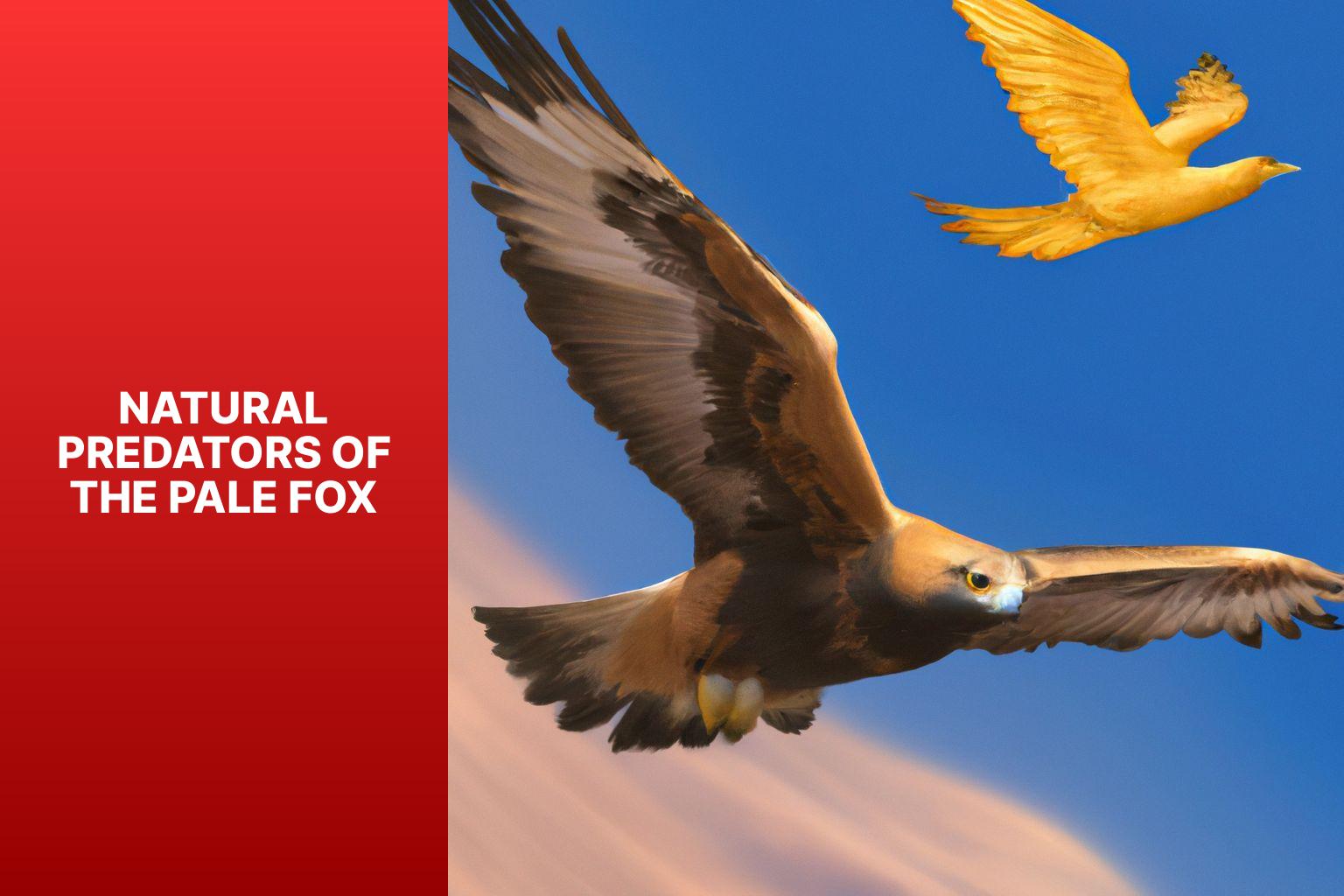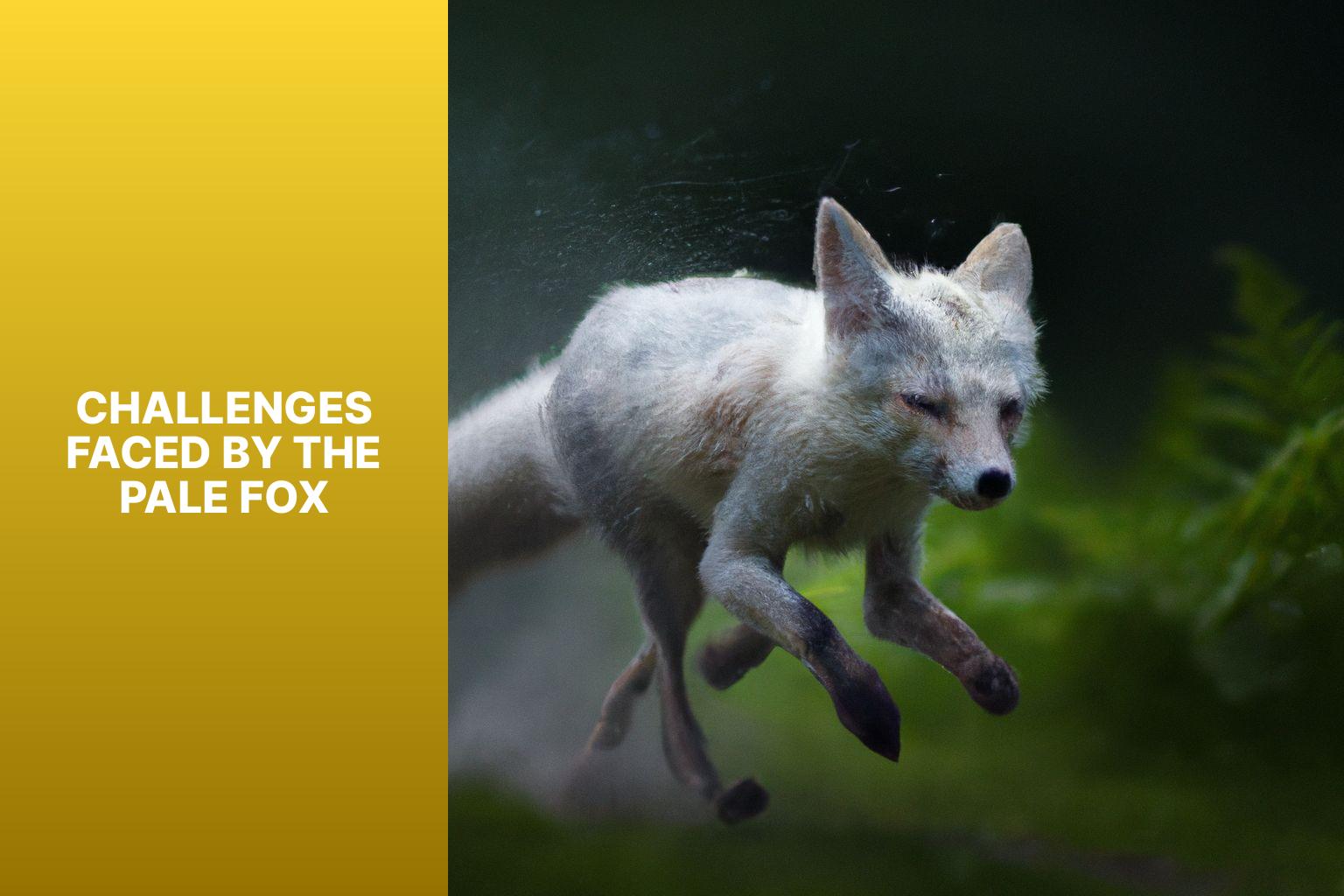Pale Fox Predators
The pale fox, also known as the African sand fox or the fennec fox, is a small and elusive species native to the Sahara Desert. Despite its adorable appearance, the pale fox faces numerous natural predators in its harsh habitat. In this article, we will explore the predators of the pale fox, as well as the challenges it faces for survival.
Introduction to the Pale Fox
Before diving into its predators, let’s get acquainted with the pale fox itself. The pale fox is a small fox species known for its distinctive sandy-colored fur and large ears. It is well adapted to survive in the desert environment, with its long ears aiding in heat dissipation and its nocturnal behavior allowing it to avoid the scorching daytime temperatures.
Natural Predators of the Pale Fox
While the pale fox may be a skilled survivor in the desert, it is not immune to predation. Several predators pose a threat to its survival, each with its own hunting strategies and advantages. Here are four notable predators of the pale fox:
1. African Wild Dogs: Also known as painted dogs, African wild dogs are highly social predators known for their cooperative hunting techniques. They have a slender build and strong endurance, making them formidable hunters even in difficult terrains like the desert.
2. Cheetahs: Cheetahs are renowned for their incredible speed, capable of reaching unmatched velocities in pursuit of their prey. Although not commonly found in the Sahara, they occasionally overlap with the territory of the pale fox and may pose a threat.
3. Golden Jackals: Golden jackals are opportunistic predators found in various habitats, including the desert. They are known to scavenge on animal carcasses and are agile hunters, making them potential threats to the pale fox.
4. Birds of Prey: Various birds of prey, such as the African hawk-eagle and the lanner falcon, inhabit the desert and hunt small mammals, including the pale fox. These avian predators use their keen eyesight and aerial prowess to spot and capture their prey.
Challenges Faced by the Pale Fox
In addition to natural predators, the pale fox faces several challenges that threaten its survival in the harsh desert environment. These challenges include:
1. Competition for Food: The desert ecosystem is characterized by limited resources, including food. The pale fox must compete with other carnivores, including its predators, for scarce prey, such as rodents and insects.
2. Loss of Habitat: Human activities, such as agriculture and urbanization, have resulted in the degradation and loss of the pale fox’s natural habitat. This loss of suitable living spaces puts additional pressure on the species.
3. Climate Change: The desert environment is already prone to extreme weather conditions, but climate change exacerbates these challenges. Rising temperatures, changes in rainfall patterns, and desertification can impact the availability of food and water sources for the pale fox.
Understanding the natural predators and challenges faced by the pale fox sheds light on the complex dynamics of survival in the desert ecosystem. It serves as a reminder of the resilience and adaptability required for this remarkable species to thrive in such an unforgiving environment.
Contents
- 1 Key takeaway:
- 2 Pale Fox Predators
- 3 Natural Predators of the Pale Fox
- 4 Challenges Faced by the Pale Fox
- 5 Climate Change
- 6 Frequently Asked Questions
- 6.1 What are the main characteristics of the Pale Fox?
- 6.2 What is the life span of a Pale Fox?
- 6.3 What is the Latin name for Pale Fox?
- 6.4 What is the significance of the sandy coat of the Pale Fox?
- 6.5 What are the short legs of the Pale Fox used for?
- 6.6 What is the distinctive feature of the Pale Fox’s tail?
Key takeaway:
- Pale Fox Predators: The pale fox faces natural predators in its environment, including African wild dogs, cheetahs, golden jackals, and birds of prey.
- Challenges Faced by the Pale Fox: The pale fox encounters challenges such as competition for food and loss of habitat due to human activities. Climate change poses a threat to its survival.
Pale Fox Predators
Pale foxes, known as pale fox predators, have a number of natural enemies in their habitat. These predators play a crucial role in maintaining the balance of the ecosystem. Let’s take a closer look at the key predators of pale foxes:
-
African Golden Wolf: These opportunistic predators have been observed preying on pale foxes. They are swift and agile hunters, posing a formidable threat.
-
Eagles: Certain species of eagles, such as the golden eagle, pose a danger to pale foxes. With powerful talons and keen eyesight, they can swoop down and capture a fox.
-
Jackals: Jackals, widely known as skilled hunters, are scavengers as well. They have been observed successfully hunting and capturing pale foxes, especially when the foxes are in smaller groups or vulnerable.
-
Raptor Birds: Large birds of prey, including owls and hawks, actively hunt and kill pale foxes. With their exceptional sight and silent flight, these birds surprise their prey.
-
Predatory Cats: Cheetahs, leopards, and African golden cats, predators of pale foxes, are apex predators capable of hunting and killing them. Their stealth, speed, and powerful jaws make them formidable adversaries.
It’s important to note that while these pale fox predators pose threats, they also contribute to the overall health and functioning of the ecosystem. The presence of predators helps regulate populations, ensuring the survival and adaptation of prey species.
Natural Predators of the Pale Fox

Photo Credits: Foxauthority.Com by James Flores
The Pale Fox, a fascinating creature of the African savannah, faces a myriad of natural predators. From swift African Wild Dogs to lightning-fast Cheetahs, and even the cunning Golden Jackals, the Pale Fox navigates a world full of danger. But it’s not just these ground-dwelling hunters that pose a threat. The elegant Birds of Prey soar above, ever watchful for a chance to snatch a vulnerable fox. Join us on a journey to learn about the dramatic encounters between the Pale Fox and its fierce adversaries.
1. African Wild Dogs
African Wild Dogs, also known as African painted dogs or Cape hunting dogs, are natural predators of the pale fox.
They live and hunt in packs of 6 to 20 individuals.
African wild dogs are highly proficient hunters, capable of reaching speeds up to 37 mph (60 km/h).
They have an impressive success rate of 80% in hunting and catching prey, which makes them one of the most skilled predators in Africa.
The diet of African wild dogs mainly consists of medium-sized ungulates such as impalas, gazelles, and wildebeests.
They engage in coordinated group hunts, utilizing teamwork and communication skills.
Unfortunately, African wild dogs face various threats like habitat loss, fragmentation, and persecution.
Therefore, conservation efforts are essential for ensuring the survival of this endangered species and maintaining ecosystem balance.
2. Cheetahs
Cheetahs are amazing creatures. They are natural predators of the pale fox and are known for their incredible speed. Cheetahs can reach speeds of up to 70 miles per hour in short bursts, making them highly effective hunters.
Their slender bodies, long legs, and flexible spines contribute to their exceptional speed and agility. Cheetahs primarily rely on their bursts of speed to chase and capture their prey. They are particularly skilled at stalking, using camouflage and stealth to get close before launching into a high-speed chase.
Once they catch their prey, cheetahs use their sharp teeth and retractable claws to quickly bring it down. The pale fox must remain alert and vigilant to avoid becoming a victim of the cheetah’s hunting prowess. Survival is a constant battle for both species in their harsh and coexisting landscapes.
3. Golden Jackals
The Golden Jackal, also known as Canis aureus, is known for its predatory behavior towards the Pale Fox.
These jackals are highly adaptable and can be found in various habitats such as forests, deserts, and grasslands.
They have a diverse diet, being omnivorous and consuming small animals as well as plants.
The Golden Jackals have a body length ranging from 85-100 cm and a shoulder height of 40-50 cm.
They are present in parts of Africa, Asia, and southeastern Europe.
Their ability to scavenge and hunt allows them to be formidable predators for the Pale Fox.
With their opportunistic nature, they pose a potential threat to the Pale Fox population.
The Canis aureus, or Golden Jackal, is highly skilled in both scavenging and hunting, making them versatile and adaptable predators.
4. Birds of Prey
Birds of Prey and Examples:
– African Fish Eagle
– Lappet-faced Vulture
– Bateleur
– Tawny Eagle
Birds of prey, such as the African Fish Eagle, Lappet-faced Vulture, Bateleur, and Tawny Eagle, are natural predators of the pale fox and pose a significant threat to their population. These magnificent birds have excellent eyesight, powerful beaks, and talons that enable them to efficiently hunt and capture small mammals like the pale fox.
In the ecosystem, birds of prey play a crucial role in maintaining balance by controlling the population of small mammals, regulating the food chain, and preventing overpopulation. The predation pressure from these remarkable birds of prey poses a significant challenge for the pale fox. To survive, the pale fox must remain constantly alert, relying on its agility and speed to avoid becoming prey.
To ensure the survival of both the pale fox and the birds of prey, it is essential to protect their habitats. By preserving natural ecosystems and promoting conservation efforts, we can safeguard the future of these important species.
Challenges Faced by the Pale Fox

Photo Credits: Foxauthority.Com by Gary Robinson
With relentless competition for food and habitat loss, the challenges faced by the pale fox are daunting. In this section, we’ll explore how these factors pose significant threats to the survival of this magnificent creature. From intense battles for limited resources to the encroachment on their shrinking habitats, the pale fox fights an uphill battle for its existence. Brace yourself for a closer look into the challenges this remarkable animal confronts.
1. Competition for Food
Pale Foxes face numerous challenges when it comes to competing for food. The first hurdle they encounter is contending with other formidable predators in their environment, such as African Wild Dogs, Cheetahs, Golden Jackals, and Birds of Prey. These predators also rely on the same prey as the Pale Foxes, resulting in a highly competitive environment.
The scarcity of food can further intensify competition within the Pale Fox population itself, leading to heightened aggression and rivalry among individuals. Environmental factors like drought or changes in prey availability can exacerbate the competition for food. This limited availability of resources poses a significant difficulty for Pale Foxes in finding enough sustenance to survive and reproduce.
Consequently, the ability to navigate this fierce competition becomes crucial for their ultimate survival. Individuals with superior hunting and foraging skills have a greater likelihood of successfully securing their food and passing on their genes. The Pale Fox’s adaptability and resourcefulness in locating and capturing prey are vital traits that enable them to thrive in their challenging and competitive environment.
2. Loss of Habitat
Loss of Habitat: The Pale Fox faces a significant challenge due to the loss of habitat. Human activities like deforestation and urbanization have resulted in the destruction and fragmentation of their natural habitats. As a consequence, the Pale Fox is experiencing a loss of the areas required for shelter, breeding, and hunting, leading to a decline in population and an increased risk of extinction.
Habitat loss has adverse effects on the Pale Fox. It restricts their access to food sources, as prey may no longer be available in the reduced habitat. It exposes them to heightened competition from other animals as they are forced into smaller areas. The loss of habitat diminishes the Pale Fox’s ability to find safe places for raising their young, which further impacts their reproductive success.
Conservation efforts are crucial in addressing the loss of habitat. It is essential to protect and restore the natural habitats of the Pale Fox, such as grasslands and semi-deserts, to ensure their survival. This can be accomplished through initiatives such as creating protected areas and implementing sustainable land-use practices. By conserving their habitat, we can support the Pale Fox’s future and preserve the biodiversity of their ecosystems.
Climate Change

Photo Credits: Foxauthority.Com by John Miller
Climate change has triggered a ripple effect in nature, and among its many impacts, it has brought about significant changes in the dynamics of predator-prey relationships. In this section, we will uncover the fascinating role of climate change in shaping the hunting patterns and survival strategies of pale fox predators. From the agile African wild dogs to the lightning-fast cheetahs, the adaptable golden jackals, and the mighty birds of prey, we will explore how these species have had to adapt and navigate the evolving landscapes in the face of our changing climate.
Frequently Asked Questions
What are the main characteristics of the Pale Fox?
The Pale Fox, scientifically known as Vulpes pallida, has a pale sandy coat with a black-tipped tail. It has a narrow muzzle, large ears with rounded tips, and a body length between 40 and 45 cms (15.7 – 17.7 inches). It weighs between 2 and 3 kgs (4.4 – 6.5 lbs).
What is the life span of a Pale Fox?
A Pale Fox has a life expectancy of up to 10 years.
What is the Latin name for Pale Fox?
The Latin name for Pale Fox is Vulpes pallida.
What is the significance of the sandy coat of the Pale Fox?
The sandy coat of the Pale Fox allows it to blend well with the desert-like terrain in its native home ranges in the African Sahel region.
What are the short legs of the Pale Fox used for?
The short legs of the Pale Fox are adapted for running in the sandy or stony arid terrain it inhabits.
What is the distinctive feature of the Pale Fox’s tail?
The tail of the Pale Fox is bushy and has a black tip.


